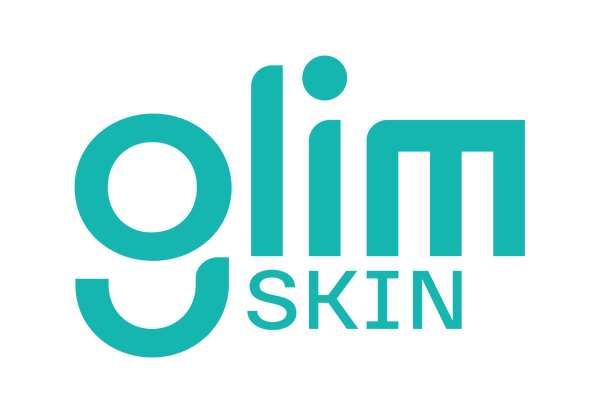
Die Studien sprechen für sich.
Über 10.000 wissenschaftliche Veröffentlichungen zu Kaltplasmaanwendungen auf der Haut.*
Eine kleine Auswahl haben wir hier für Dich zusammengestellt:
Physical-technical and chemical characterisation
Kogelheide, F., Offerhaus, B., Bibinov, N., Krajinski, P., Schücke, L., Schulze, J., Stapelmann, K., & Awakowicz, P. (2020). Characterisation of volume and surface dielectric barrier discharges in N 2 –O 2 mixtures using optical emission spectroscopy. Plasma Processes and Polymers, 17(6), 1900126. https://doi.org/10.1002/ppap.201900126
Busco, G., Robert, E., Chettouh-Hammas, N., Pouvesle, J. M., & Grillon, C. (2020). The emerging potential of cold atmospheric plasma in skin biology. Free Radical Biology and Medicine, 161, 290-304. https://doi.org/10.1016/j.freeradbiomed.2020.10.004
Offerhaus, B., Kogelheide, F., Jalat, D., Bibinov, N., Schulze, J., Stapelmann, K., & Awakowicz, P. (2019). Determination of NO densities in a surface dielectric barrier discharge using optical emission spectroscopy. Journal of Applied Physics, 126(19), 193301. https://doi.org/10.1063/1.5094894
Engelhardt, M., Kogelheide, F., Stapelmann, K., Bibinov, N., & Awakowicz, P. (2017). Micro-plasmoids in self organized filamentary dielectric barrier discharges. Plasma Processes and Polymers, 14(7), 1600095. https://doi.org/10.1002/ppap.201600095
Offerhaus, B., Lackmann, J.-W., Kogelheide, F., Bracht, V., Smith, R., Bibinov, N., Stapelmann, K., & Awakowicz, P. (2017). Spatially resolved measurements of the physical plasma parameters and the chemical modifications in a twin surface dielectric barrier discharge for gas flow purification. Plasma Processes and Polymers, 14(10), 1600255. https://doi.org/10.1002/ppap.201600255
Baldus, S., Kogelheide, F., Bibinov, N., Stapelmann, K., & Awakowicz, P. (2015). Phase resolved analysis of the homogeneity of a diffuse dielectric barrier discharge. Journal of Physics D: Applied Physics, 48(37), 375202. https://doi.org/10.1088/0022-3727/48/37/375202
Heuer, K., Hoffmanns, M.A., Demir, E., Baldus, S., Volkmar, C.M., Röhle, M., Fuchs, P.C., Awakowicz, P., Suschek, C.V. and Opländer, C. (2015). The topical use of non-thermal dielectric barrier discharge (DBD): Nitric oxide related effects on human skin. Nitric Oxide, 44, 52-60. https://doi.org/10.1016/j.niox.2014.11.015
Antimicrobial effect
Kogelheide, F., Voigt, F., Hillebrand, B., Moeller, R., Fuchs, F., Gibson, A. R., Awakowicz, P., Stapelmann, K., & Fiebrandt, M. (2020). The role of humidity and UV-C emission in the inactivation of B. subtilis spores during atmospheric-pressure dielectric barrier discharge treatment. Journal of Physics D: Applied Physics, 53(29), 295201. https://doi.org/10.1088/1361-6463/ab77cc
Daeschlein, G., Scholz, S., Ahmed, R., von Woedtke, T., Haase, H., Niggemeier, M., Kindel, E., Brandenburg, R., Weltmann, K.D. and Juenger, M. (2012). Skin decontamination by low-temperature atmospheric pressure plasma jet and dielectric barrier discharge plasma. Journal of Hospital Infection, 81(3), 177-183. https://doi.org/10.1016/j.jhin.2012.02.012
Bae, M., Lademann, J., Meinke, M. C., Meder, B., & Geilen, C. (2025). Therapeutic Use of Cold Atmospheric Plasma for the Treatment of Mild Acne Papulopustulosa—A Randomized, Controlled, Double‐Blind Pilot Study. Dermatologic Therapy, 2025(1), 4228323. https://doi.org/10.1155/dth/4228323
Tolerance and Efficacy
Mariachiara, A., Anna, V., Alessandra, G., Edoardo, G. P., Stefania, B., Mariateresa, R., & Piergiacomo, Calzavara-Pinton Piergiacomo. (2020). Cold atmospheric plasma (CAP) as a promising therapeutic option for mild to moderate acne vulgaris: Clinical and non-invasive evaluation of two cases. Clinical Plasma Medicine, 19, 100110. https://doi.org/10.1016/j.cpme.2020.100110
Śmiłowicz, D., Kogelheide, F., Schöne, A. L., Stapelmann, K., Awakowicz, P., & Metzler-Nolte, N. (2020). Catalytic oxidation of small organic molecules by cold plasma in solution in the presence of molecular iron complexes†. Scientific Reports, 10(1), 21652. https://doi.org/10.1038/s41598-020-78683-7
Lackmann, J.-W., Bruno, G., Jablonowski, H., Kogelheide, F., Offerhaus, B., Held, J., Schulz-von der Gathen, V., Stapelmann, K., von Woedtke, T., & Wende, K. (2019). Nitrosylation vs. oxidation – How to modulate cold physical plasmas for biological applications. PLOS ONE, 14(5), e0216606. https://doi.org/10.1371/journal.pone.0216606
Balzer, J., Demir, E., Kogelheide, F., Fuchs, P. C., Stapelmann, K., & Opländer, C. (2019). Cold atmospheric plasma (CAP) differently affects migration and differentiation of keratinocytes via hydrogen peroxide and nitric oxide-related products. Clinical Plasma Medicine, 13, 1–8. https://doi.org/10.1016/j.cpme.2018.11.001
Śmiłowicz, D., Kogelheide, F., Stapelmann, K., Awakowicz, P., & Metzler-Nolte, N. (2019). Study on Chemical Modifications of Glutathione by Cold Atmospheric Pressure Plasma (Cap) Operated in Air in the Presence of Fe(II) and Fe(III) Complexes. Scientific Reports, 9(1), 18024. https://doi.org/10.1038/s41598-019-53538-y
Lackmann, J.-W., Klinkhammer, C., Verlackt, C., Jabloniwski, H., Kogelheide, F., Stapelmann, K., Bogaerts, A., Havenith, M., Weltmann, K.-D., & Wende, K. (2018). Modulating Plasma-Induced Thiol Chemistry In Liquids. Clinical Plasma Medicine, 9, 38–39. https://doi.org/10.1016/j.cpme.2017.12.060
Chemical fingerprints of cold physical plasmas – an experimental and computational study using cysteine as tracer compound. Scientific Reports, 8(1), 7736. https://doi.org/10.1038/s41598-018-25937-0
Klinkhammer, C., Verlackt, C., śmiłowicz, D., Kogelheide, F., Bogaerts, A., Metzler-Nolte, N., Stapelmann, K., Havenith, M., & Lackmann, J.-W. (2017). Elucidation of Plasma-induced Chemical Modifications on Glutathione and Glutathione Disulphide. Scientific Reports, 7(1), 13828. https://doi.org/10.1038/s41598-017-13041-8
Kogelheide, F., Kartaschew, K., Strack, M., Baldus, S., Metzler-Nolte, N., Havenith, M., Awakowicz, P., Stapelmann, K., & Lackmann, J.-W. (2016). FTIR spectroscopy of cysteine as a ready-to-use method for the investigation of plasma-induced chemical modifications of macromolecules. Journal of Physics D: Applied Physics, 49(8), 084004. https://doi.org/10.1088/0022-3727/49/8/084004
Lackmann, J.-W., Baldus, S., Steinborn, E., Edengeiser, E., Kogelheide, F., Langklotz, S., Schneider, S., Leichert, L. I. O., Benedikt, J., Awakowicz, P., & Bandow, J. E. (2015). A dielectric barrier discharge terminally inactivates RNase A by oxidizing sulfur-containing amino acids and breaking structural disulfide bonds. Journal of Physics D: Applied Physics, 48(49), 494003. https://doi.org/10.1088/0022-3727/48/49/494003
Rajasekaran, P., Opländer, C., Hoffmeister, D., Bibinov, N., Suschek, C. V., Wandke, D., & Awakowicz, P. (2011). Characterization of dielectric barrier discharge (DBD) on mouse and histological evaluation of the plasma‐treated tissue. Plasma Processes and Polymers, 8(3), 246-255. https://doi.org/10.1002/ppap.201000122
Marschewski, M., Hirschberg, J., Omairi, T., Höfft, O., Viöl, W., Emmert, S., & Maus‐Friedrichs, W. (2012). Electron spectroscopic
analysis of the human lipid skin barrier: cold atmospheric plasma‐induced changes in lipid composition. Experimental dermatology, 21(12), 921-925. https://doi.org/10.1111/exd.12043
Daeschlein, G., Scholz, S., Ahmed, R., Majumdar, A., von Woedtke, T., Haase, H., Niggemeier, M., Kindel, E., Brandenburg, R., Weltmann, K.D. and Jünger, M. (2012). Cold plasma is well‐tolerated and does not disturb skin barrier or reduce skin moisture. JDDG: Journal der Deutschen Dermatologischen Gesellschaft, 10(7), 509-515. https://doi.org/10.1111/j.1610-0387.2012.07857.x
*bezogen auf die Anwendung von Kaltplasma (explizit: dielektrische Barriereentladung) auf die Haut.
